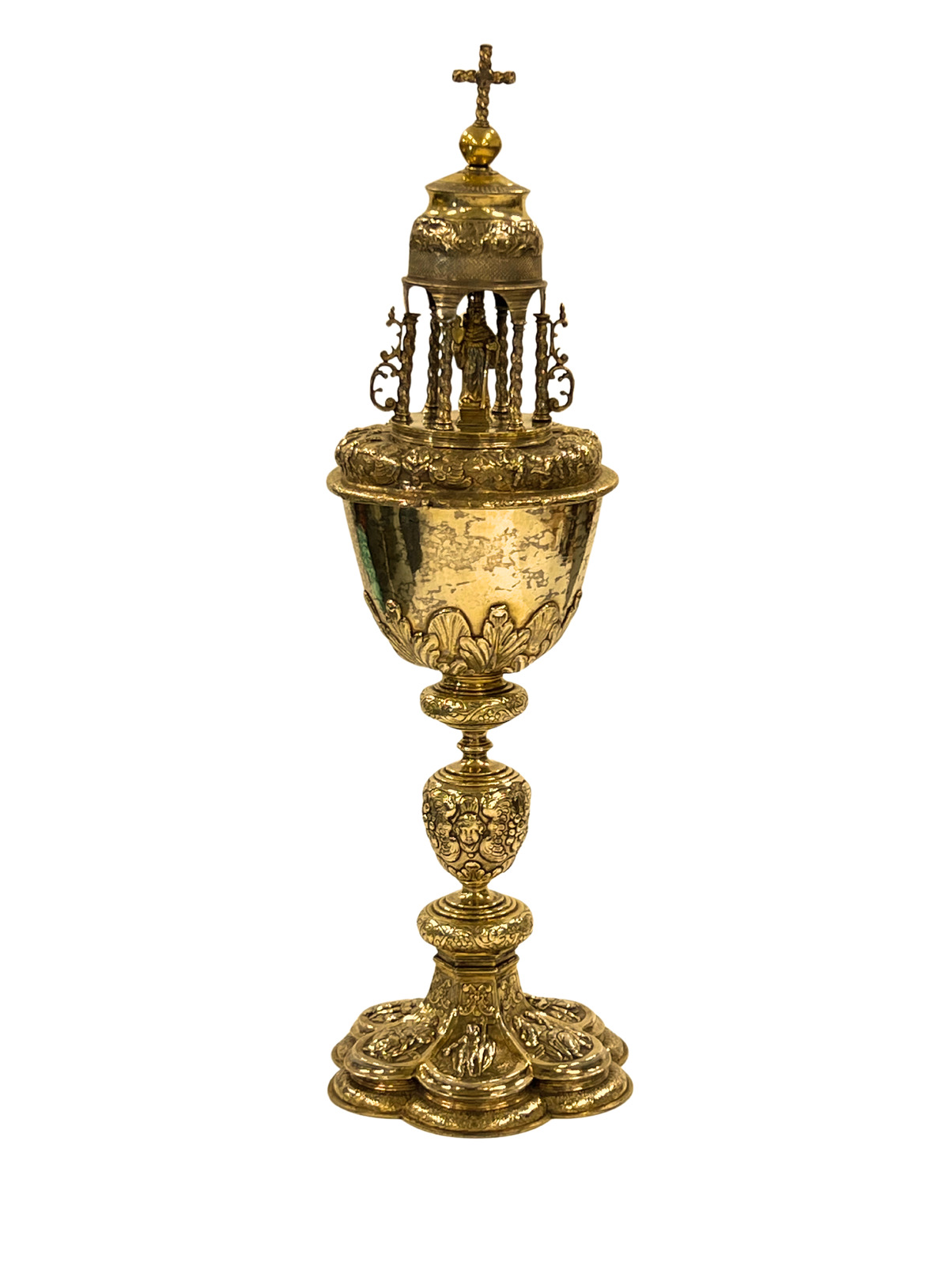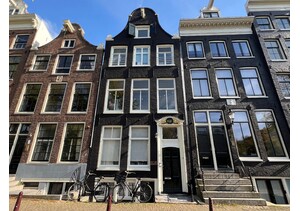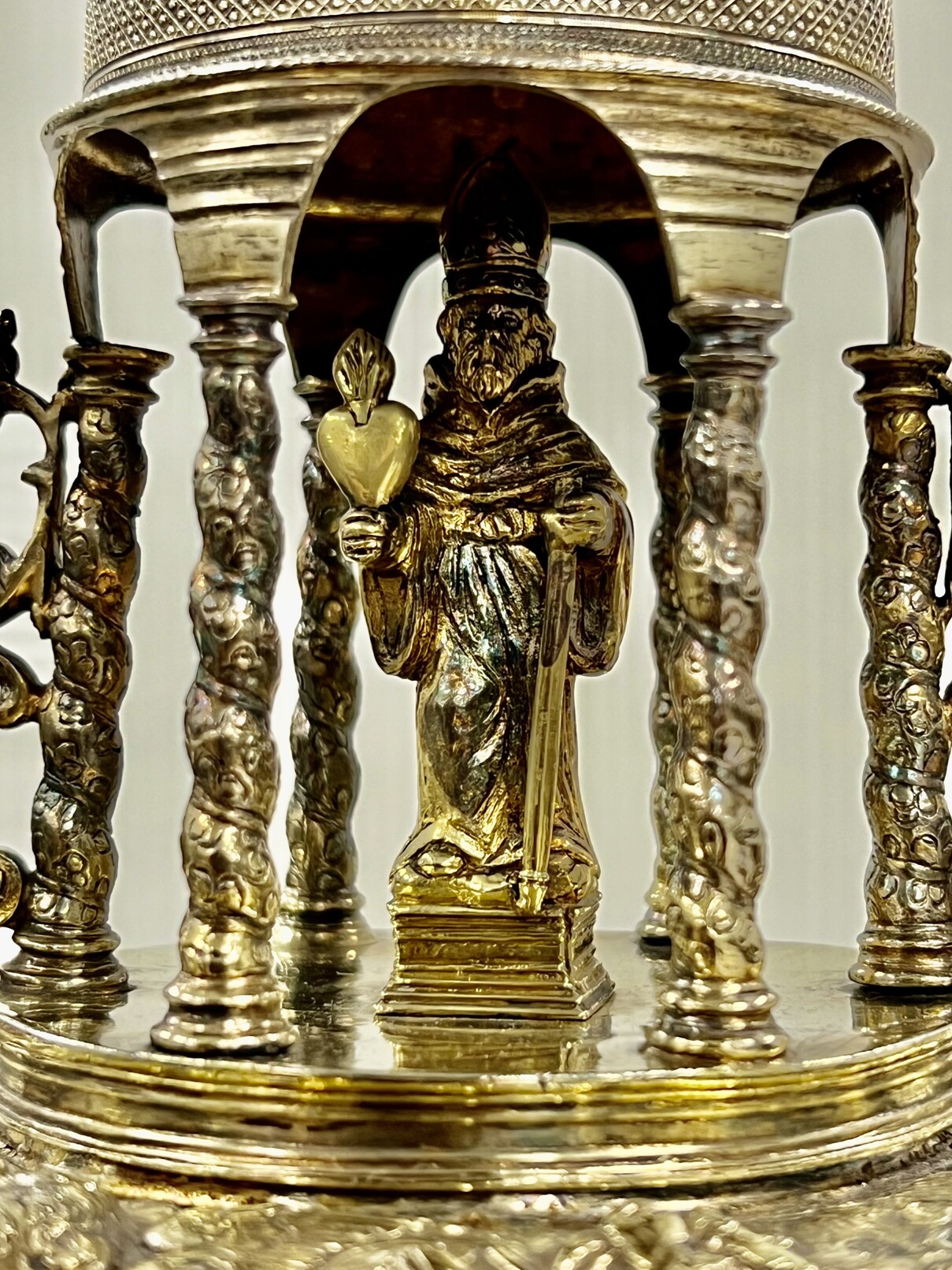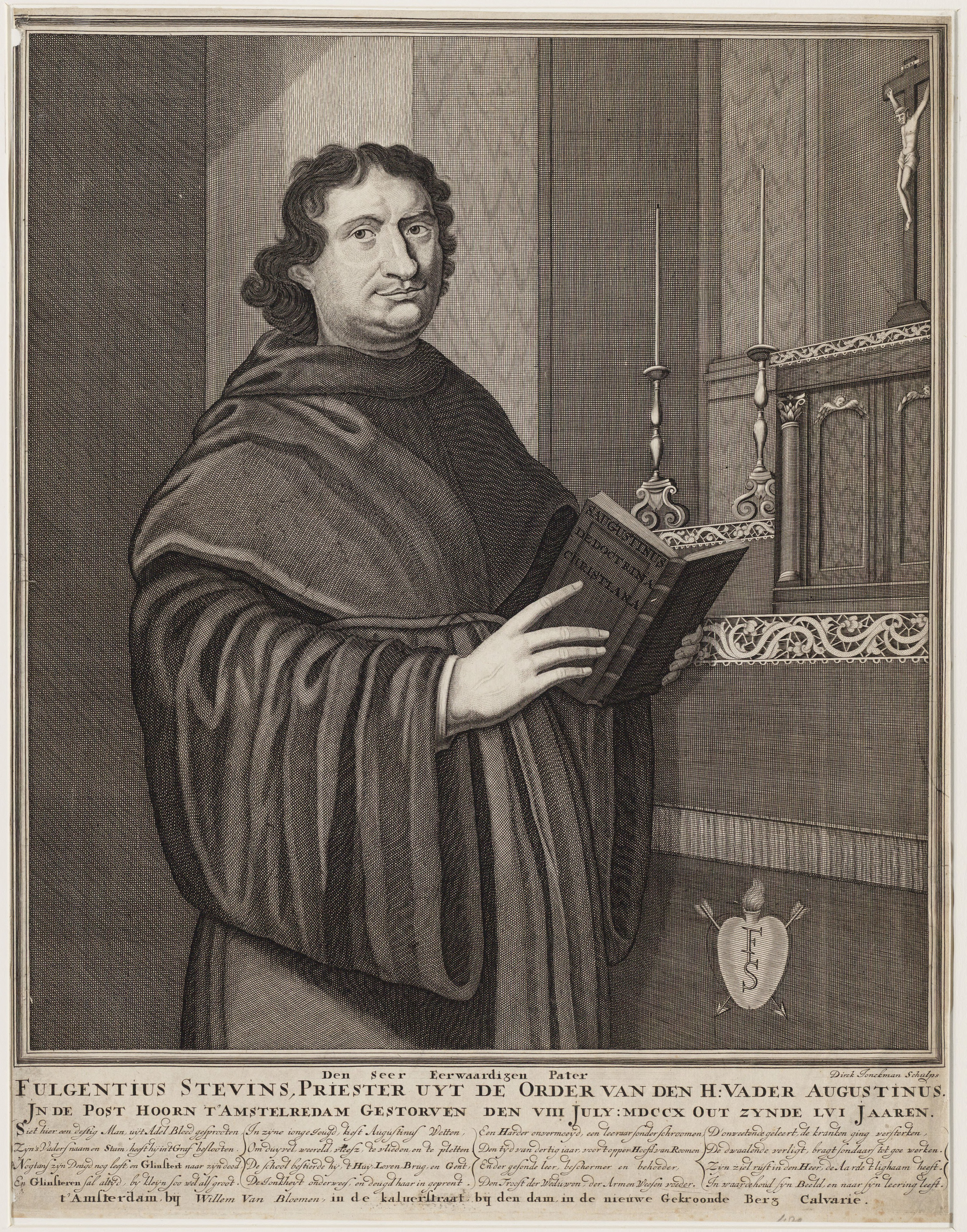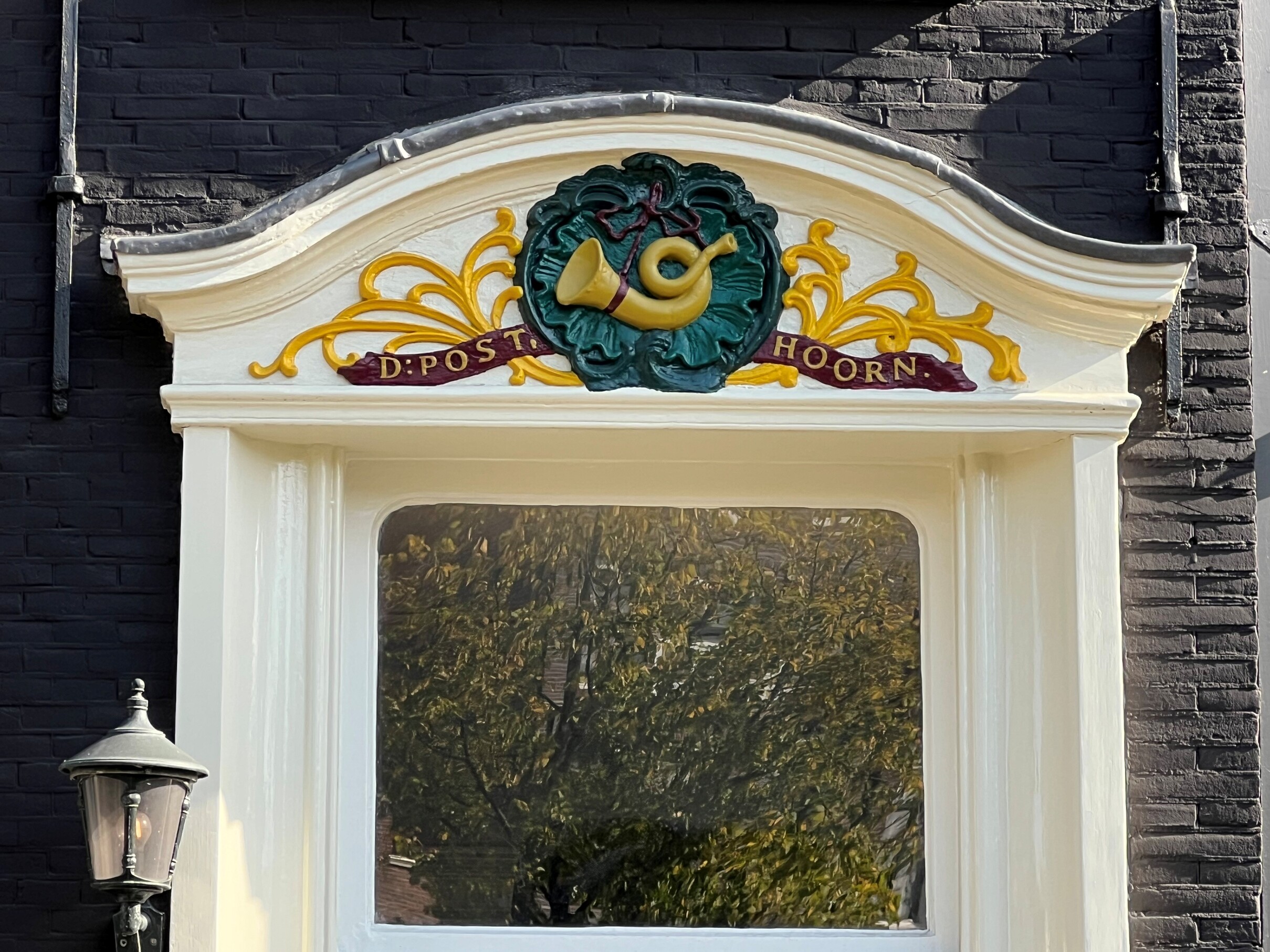Around 1700, there was not only discord between Catholics and Protestants. Within the Catholic Church, a growing divide emerged between Dutch priests and missionaries sent from abroad.
Location
De Posthoorn
Prinsengracht 7
Type
Hidden church
Religious community
Roman Catholic Church
Object
Gilded ciborium with a depiction of St Augustine on the lid
Maker and date
Maker unknown
1643
Visit
The ciborium is not on display
This seventeenth-century ciborium comes from the Roman Catholic hidden church De Posthoorn. On the lid, Saint Augustine is depicted. He is recognizable as a bishop by his mitre and crosier. The flaming heart in his right hand, symbolizing his fervent faith, is another identifying feature. Saint Augustine wrote a rule of life that greatly influenced the development of Catholic monastic orders and congregations. He is also the patron saint of a hidden church on the Prinsengracht, De Posthoorn, which belonged to the Order of Saint Augustine in the seventeenth century.
hidden church
Building in which hidden religious services were held in the Dutch Republic (1588-1795). Christian denominations outside the Calvinist church, such as Catholics, Lutherans, Mennonites and Remonstrants, had to practice their religions in hidden churches.
Bishop
Head of a diocese. A bishop is a cleric who has received the highest degree of ordination. Bishops are considered the successors of the apostles.
patron saint
A patron saint is a saint who is regarded as the protector of a particular place, profession, association, or person.
Augustinians
Roman Catholic monastic order. The order originated in Italy in the 13th century. Its origins lay with laypeople and clergy living in poverty, who in remote areas devoted themselves to prayer and preaching. Like the Franciscans, the Dominicans, and the Carmelites, the Augustinians formed a so-called mendicant order: they did not support themselves but lived on donations. The Augustinians have made significant contributions to theology and Catholic education.
Ciborium
Consecrated gilded or golden cup with a lid for storing consecrated hosts.
Between the Alteratie (1578) and the reestablishment of the episcopal hierarchy (1853), a large proportion of the Catholic priests in Amsterdam came from religious orders. They were often sent from abroad to serve the hidden churches in the mission territory of Holland. Since most of these orders were directly governed from Rome, the order priests were more familiar with the latest theological developments in Rome. The differing views on church governance and theology between the Dutch clergy and the order priests from abroad regularly led to tensions.
One of the users of this ciborium, the Flemish Father Fulgentius Stevins (1654–1710), served as pastor of De Posthoorn hidden church from 1695 to 1710. As a clergyman of the Augustinian Order, he was deeply loyal to ecclesiastical authority in Rome. He abhorred Jansenism — a stricter interpretation of the writings of Saint Augustine that had been condemned by Rome. This doctrine was supported by a vocal minority of Catholic priests in Amsterdam. After he fiercely attacked the errors of Jansenist-leaning priests from nearby churches in his sermons, a heated polemic broke out between the priests.
Alteratie
In 1578, the Catholic city government of Amsterdam was deposed. A Protestant city council took its place. The consequence of this change (Alteratie in Dutch) was that, from that moment on, the Reformed Church became the only church that was allowed to manifest itself publicly. Catholic churches and monasteries were confiscated and given new functions.
Pastor
(Latin for shepherd) is the priest, to whom the leadership of a parish (church) is entrusted by the bishop.
Reestablishment of the episcopal hierarchy (1853)
After the Netherlands came under Protestant rule during the Eighty Years' War, Pope Gregory XV declared the country a mission territory in 1622. This meant that the Catholic community in the Netherlands would from that moment on be directed directly from Rome. The local dioceses were dissolved, and bishops lost their authority. Catholic churches during this period were referred to as (mission) stations.
In 1853, the episcopal hierarchy was restored, and despite strong opposition from Protestant circles, bishops and their corresponding dioceses were reintroduced.
In a surviving portrait, Father Fulgentius is depicted wearing the Augustinian habit and holding a book on Christian doctrine by Saint Augustine. His initials appear inside a flaming heart, similar to the one of St. Augustine on the ciborium. At the bottom of the copper engraving, his defense of Roman Catholic doctrine is praised in poetic verse.
Habit
The clothing worn by monks, nuns, and others in religious orders. Religious orders often have habits in their own style and colour. Their members can therefore be recognised by their habit.
Pieter-Jan van Giersbergen
Curator Our Lord in the Attic Museum
Last edited
October 22, 2025
St. Augustine ciborium, unknown maker, Antwerp, 1643, gilded silver. Collection R.K. parochie van de H. Nicolaas te Amsterdam. Loan at Museum Ons' Lieve Heer op Solder.
Exterior: photography Our Lord in the Attic Museum.
Detail St. Augustine ciborium, unknown maker, Antwerp, 1643, gilded silver. Collection of R.K. parochie van de H. Nicolaas te Amsterdam. Loan at Museum Ons' Lieve Heer op Solder.
Den Seer Eerwaardigen Pater Fulgentius Stevins etc., Dirck Jonckman, ca. 1710, engraving. Collection City Archives Amsterdam: drawings and prints.
Depiction of a post horn, unknown maker, unknown date. Photography Our Lord in the Attic Museum.
Dyck, L. van en Dijck, L. van, ’De Augustijnen in de Hollandse Zending, Gelderland, Limburg en Staats-Brabant (1623-1853)’, Augustiana vol. 17 (1967) 274-298.


